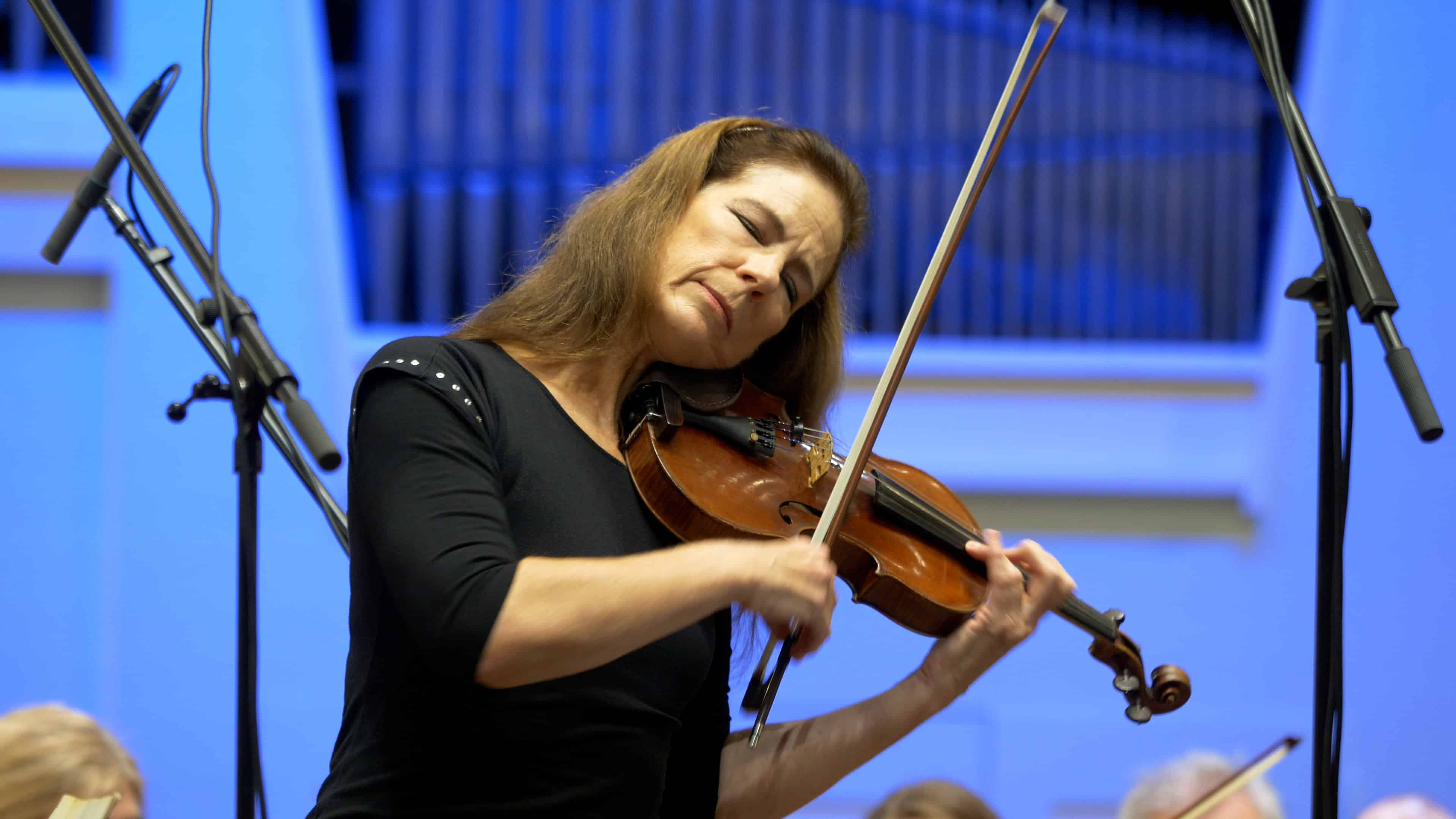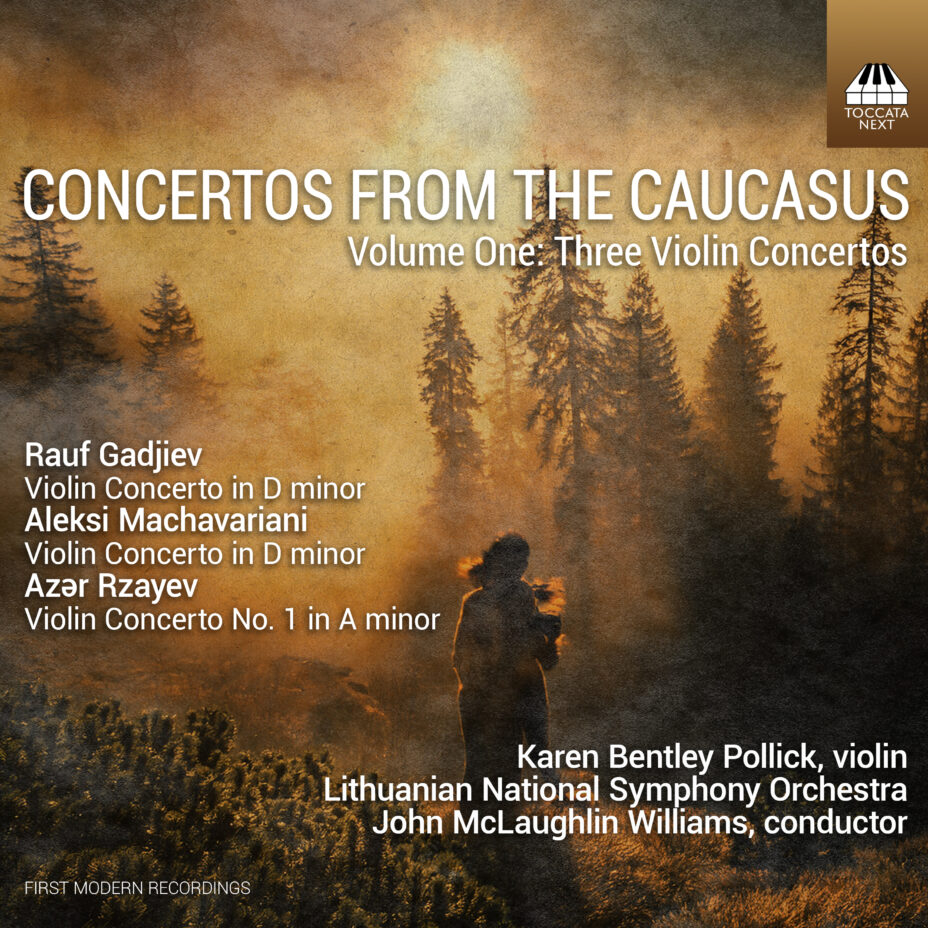Posted by Martin Anderson, Producer, Toccata Classics (MA), Karen Bentley Pollick, violinist (KBP), and John McLaughlin Williams, conductor (JMW):
MA: Let me start with the most obvious question of all. Whose idea was this? Where did it come from?
JMW: Well, I guess it originated with me, and it does have an unusual beginning. For some years, I’ve been part of a loose group that I call the Sheet Music Underground. There’s a bunch of guys located all over the world that collect and share hard-to-find music. The group has a particular focus on piano music, since most of them play piano. Some are professionals, some are serious amateurs, but all of them have a great love of music, which kindled this project that began in other chat rooms where people were sharing scores. This offshoot group evolved organically, becoming independent and communicating through e-mails. Well, one of the members based in London somehow got access to archives of music from Azerbaijan and Georgia, and he started sharing hundreds of scores. There are probably a few thousand scores in the archive altogether by now. What it revealed was that these two countries – and I’m sure the same is true of other countries over there too – that although these particular countries have had relatively new or recent traditions of classical music, it is exceedingly rich. Their composers integrated the national styles with traditions of classical music to create an entire body of work, most of which is still unfamiliar in the west.
MA: It’s completely unknown. It seems to me that every time I mention an obscure composer to you, you say, ‘Oh, I’ve got a copy of his Sixth Symphony’. I imagine you must have a huge library.
JMW: Well, most of it is stored on a hard drive, but that’s how I happened to be exposed to many of these scores, especially the ones we have been talking about recently. I peruse all of them that come my way, much of which is necessarily vocal music, choral music and opera, decidedly Soviet in orientation because they had to play by the rules, of course. But notwithstanding that, there are gems amongst them because genius will always out, as they say. I focused on the violin concertos that I thought were exceptional and sent a few to Karen. The three that we recorded were among the first that I came across. They are not the only ones by any means, but these three were, I thought, quite exceptional. That’s how this project came to be. Karen thought the scores I shared with her were great. Over the years we kept talking about it, and she finally said: ‘All right, let’s do this’. And the rest is history, as we shall say.
MA: Were there always violin concertos because of specific players? For whom they were writing?
JMW: Well, because of the Soviet influence, violin concertos have been a huge part of the Russian regime for a long, long time. These particular concertos also are all modelled on the Khachaturian, which was written for David Oistrakh in 1940. So once again, they had to toe the line, and the sole influence in that way is obvious, as it would be for anyone who has any knowledge of history to recognise. The genius was realised in their ability to impose their national character on this music within this framework and to create works of lasting value that transcend the confines.
MA: Karen, what was your approach when you first held the scores, what were your first reactions?
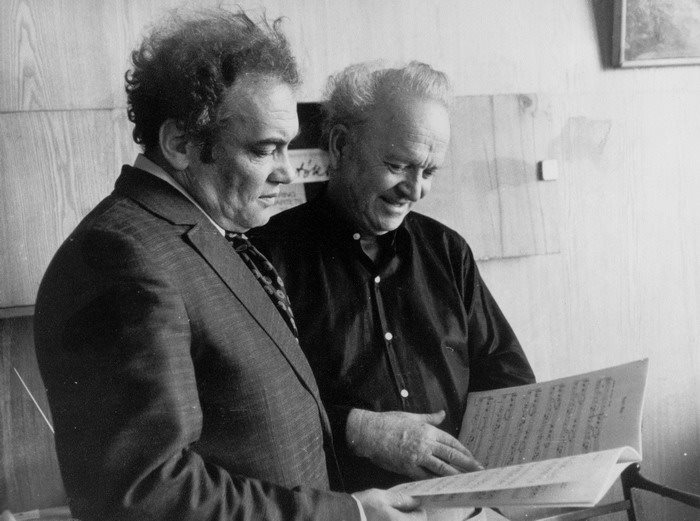
KBP: Firstly, this journey commenced in the spring of 2020, when we all had an abundance of time with nothing on the calendar anymore. Everything was cancelled, and I was residing in San Pancho, a pueblo in the state of Nayarit on the west coast of Mexico. These and other scores arrived from John via e-mail. I was immediately drawn to the concertos by the Azerbaijani composers Azər Rzayev and Rauf Gadjieff and learned them in a few months through June 2020. Then the rest was a waiting game for all of us. I revisited them, learned the piano parts, and continued to prepare. We were in the planning stages of a violin-and-piano recording of the works of Virko Baley, a Ukrainian-American composer.1 At the time I was searching for Ukrainian violin concertos to consider. I learned some of the Ukrainian concertos during those early spring months through May, but we couldn’t locate the scores and parts through our connections in Ukraine and Canada. John’s scores arrived in the nick of time for me to divert toward the Azeri concertos that showed up first. It wasn’t until August 2022 that we decided to add the concerto by the Georgian composer Alexi Machavariani to the mix. We felt that the trio of three-movement concertos constituted a cohesive whole. They were an instant match for me violinistically and aesthetically, and are fantastic music to dive into. I devoted much time over a period of four years after this project began, percolating from Mexico to Cleveland, where we gave a house concert in April 2022 with John playing the piano reductions. That rehearsal period was an essential part of our learning process. Our audience of friends, family and neighbours were the first people in the United States to hear these Caucasian concertos.
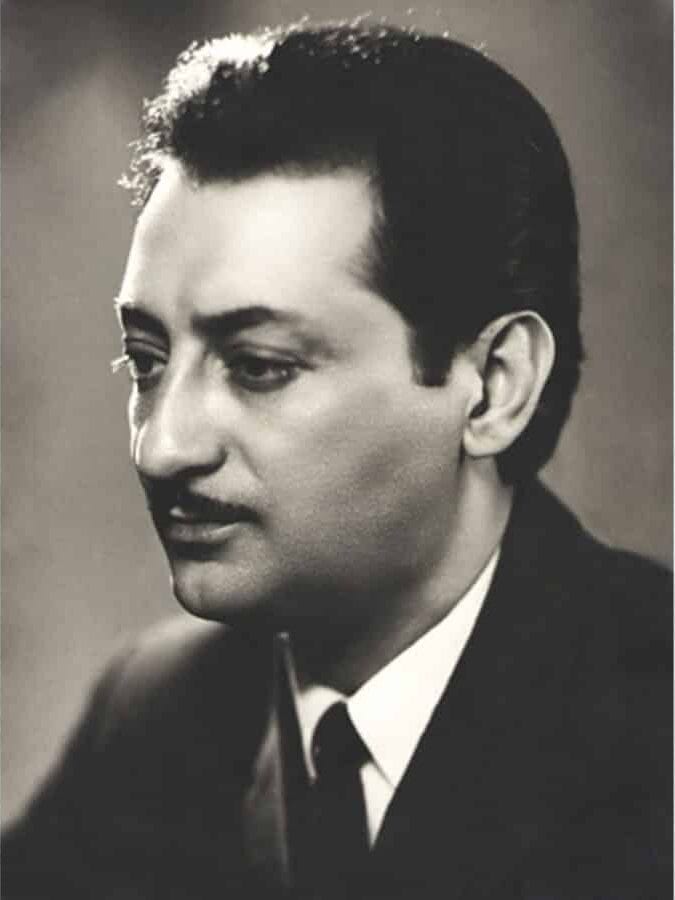
MA: Neither of you is Azeri or Georgian. How do you know you are bringing out the folk idioms in the music? How did you know you’re responding to them as fully as you might, if you were from there? As a Scotsman, if I listened to a choir singing Robert Carver, a mediaeval Scottish composer, I can tell if the choir is Scottish or not, because there’s a certain colour in the vowels and so on, and the way that the thing is presented and sung. Someone from Ohio is going to approach a folkloric piece much differently than someone from the country in question, surely?
JMW: Well, indeed, of course, you’re right. I’m not certain that any of us who are not Azerbaijani or Georgian can completely invest the truly authentic character of this music. What we can do is offer a perspective on it. I have listened to a lot of Azerbaijani repertoire. I could hear the rhythms and modalities manifested in these works, and that certainly guided how I treated the orchestra parts. To me, it’s actually pretty obvious. In the very opening of the Gadjieff, the very first orchestral tutti, when the whole orchestra enters together with bass drum and cymbals, that’s similar to what you might hear in one of their mughams, or in a march, sounding as a characteristic type of rhythm. The folkloric aspect permeates these pieces. You can’t miss it. So all I try to do is to bring that out whenever I saw it. Of course, it may ultimately sound musically like someone speaking a foreign language, however well, but we are foreigners, akin to other people interpreting music by black ancestors, at least the music of black composers written in this idiom.
KBP: I’ll chime in by sharing that I am of Norwegian heritage on my mother’s side, and I play the Norwegian hardingfele, a folk instrument that I have played at dances, weddings, gatherings and on recordings. I thus have had the experience of being the dance-music provider and watching the dancers. I have worked with dancers in many other capacities as well on my violin, including contemporary music and choreography, to decades of performing with the Seattle-based Joy Street Orchestra. I’ve also worked with the Swedish composer Ole Saxe, who has a very rich background in world music. He composed a set of six dances for me for solo violin and viola that he subsequently orchestrated as Dance Suite for violin and orchestra, comprised of a jig, tango, Ziga dance, flamenco, rhumba and salsa. I am approaching the repertoire beyond classical music to explore world-music styles infused with rhythmic vitality. I love to study languages and resided in Vilnius for three years, where I studied Lithuanian. The Baltic and Nordic regions are genetically, linguistically and culturally linked, influencing the musical heritage as well. I observed that Lithuanian contemporary music integrates Lithuanian folk-music. I attended many dance- and song-festivals while I lived in Vilnius, hearing choruses from all over the region right outside my doorstep. They sang in the churches and plazas with their ethnic costumes. Every region had a distinctly different sonority and repertoire.
MA: Lithuania is a very interesting case. When you hear the music of Bronius Kutavičius, for example, there’s a direct line from sutartinės, their ancient part-singing, to this absolutely contemporary music.
KBP: Thank you for mentioning Kutavičius. He was one of the first composers I met and heard pianist Petras Geniušas play his music on a recital. His music is influenced by minimalism. So rhythmically driven, and it’s compelling, with the crescendos reaching full throttle on the grand piano. It was very impactful to be with the Lithuanians, wonderful pianists performing their own music. Subsequently, several Lithuanian and Ukrainian composers have composed pieces for me, and I’ve worked very closely with them to sculpt that and present their visions to stage.
MA: Just as an aside, I was asked to speak at a Kutavičius conference for his 80th birthday. At the end of that week, there was a big party for him in the Composers’ Union, and though we had no language in common, we discovered we could speak alcohol together fluently and became the best of friends. Anyway, back to our talk. Is there any difference in the way our three composers responded to their roots?
JMW: As soon as you asked the question, I knew the answer was absolutely yes. Now I haven’t really codified in my mind thinking about it. I would say that Gadjieff treats the material in a bit more of a refined form. He is very cognisant of current trends of the time. And this is why there’s a certain flavour of Shostakovich, which permeates through his concerto. In a particularly effective slow movement, he grafts elements in a very specific, sophisticated way. He blends them really well within the structure. Rzayev, on the other hand, is much more basic. In the second movement in particular, with its plainly stated theme, he presents a folksong that is a stream of consciousness. I think Machavariani has an approach that’s more similar to Gadjieff and is more sophisticated. Again, his second movement comes to mind immediately in terms of representing this plaintive chant style in a refined manner. They are all highly skilled composers. I think Rzayev is the one who is the most populist of all three. He’s the one that is the least sophisticated in terms of orchestrations and technical aspects. I don’t think he wrote much orchestral music, and I think it shows in his orchestration. The technique, is very much in the manner of a good student, as opposed to the finesse of the other two composers. I have to think about that more, because that’s a very interesting question.
MA: Does either of you, or had either of you done any kind of putting out feelers to musicians or the sort of arts establishment in either country, before you undertook this project, or was it something that you did entirely off your own backs without any kind of input from others?
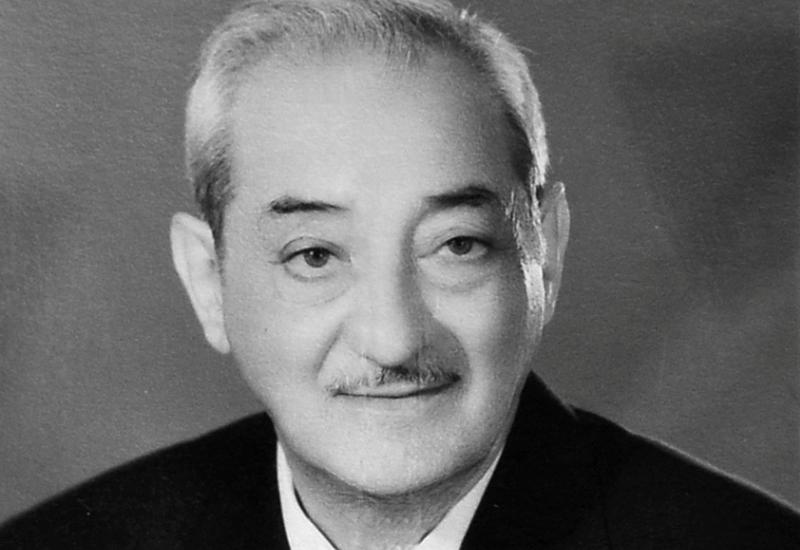
JMW: This collaboration came from us. I mean, I’d had the scores for a few years before I showed them to Karen. They’ve just been sitting around, and I’ve shown them to a violinist here and there. I suggested to some teachers that they use Rzayev and Gadjieff as teaching pieces, like they use Kabalevsky now, because they seem to be about like that in pedagogical potential. But no one bit. Incuriosity is rampant. But I knew Karen would at least be interested in looking at them. At the time I had no idea that this would actually catch fire.
MA: But, Karen, you’ve now been doing a bit of networking with the diplomatic circles?
KBP: Yes, I visited the Consul General of the Republic of Azerbaijan in Los Angeles, and they’re very excited by the recording. I met with them in July, right before they were heading to Baku for their summer vacation. I loaded them up with copies of the CD to bring to friends and family to begin the process of sharing our music in the country of its origin. I want to mention the wonderful Azerbaijani pianist Nargiz Aliyarova, who is a longtime friend of John and was essential towards procuring the parts and scores to these concertos. I will be performing at Carnegie Hall’s Weill Recital Hall with Nargiz on 6 October 2025 in a programme of music by Turkic composers, including the Sonata for violin and piano by Azerbaijani composer Gara Garayev2, influenced profoundly by Shostakovich. Both Nargiz and Jamila Javadova-Spitzberg, who organises the Azerbaijani American Music Foundation, were significant resources for Paul Conway, who wrote our copious booklet text. They connected him with friends and family of the composers, with whom he corresponded directly.
MA: I was surprised just how well informed Paul Conway was. It was very impressive. He can turn his pen to almost any composer you ask him to, but there’s a degree of detail in the programme notes here, which is above and beyond the call of what we expect from him. He went from neophyte to expert.
KBP: I gave him a lot of breadcrumbs to follow, and had ordered the book Music of Azerbaijan: From Mugham to Opera by Aida Huseynova3, the Azerbaijani musicologist that you had told me about, Martin. So I combed that book and another one, Song from the Land of Fire by Inna Naroditskaya4, for any references to our composers. There was sparse mention of our two composers in these books, in which the mugham style was extensively explored. Paul truly plunged into the depths of the leads that I gave him.
MA: You mentioned family. Vakhtang Machavariani died just before the album came out. Did he know about it?
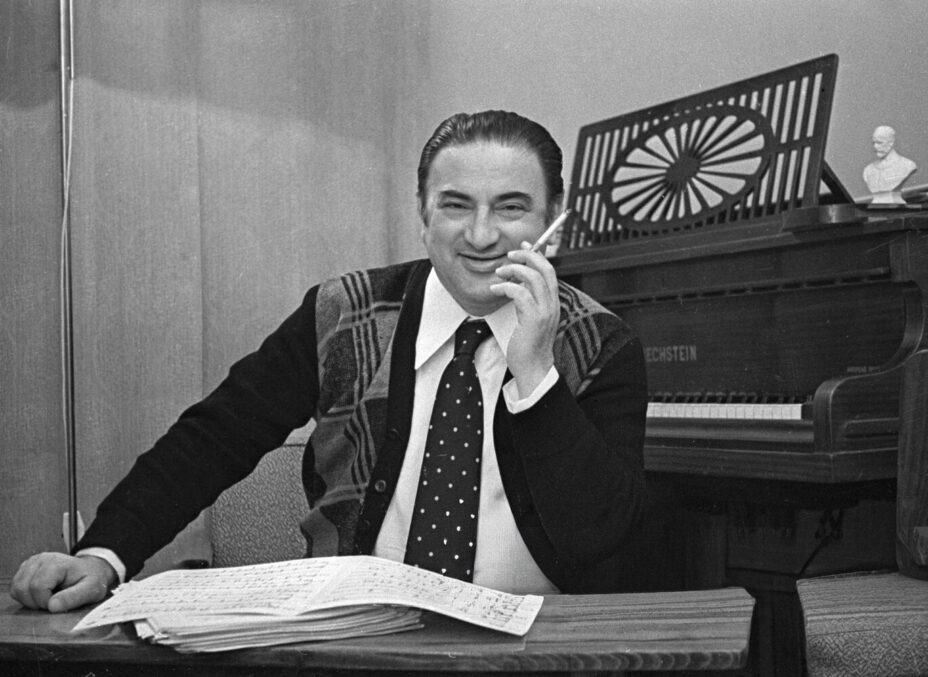
KBP: No, we neglected to inform Maestro Vakhtang Machavariani that we were planning to record his father’s violin concerto. I did not establish a direct contact with him. I was looking forward to sharing the CD with him over the summer. Instead, I will be reaching out to several Georgians. The Azerbaijanis in Los Angeles are sending some CDs to their Georgian counterparts in San Francisco, where there is also a Consul General. And hopefully I can meet with them during my upcoming trip to San Francisco in November.
MA: And of course, Armenia and Azerbaijan, having been mortal enemies for decades, are now the best of friends. I was quite looking forward to bringing out an album of Azeri and Armenian concertos as a gesture of reconciliation, but they beat me to it. I would hope we’re going to do lots more concertos from the Caucasus. And not just with you, Karen, but also flute concertos and piano concertos and organ concertos and mandolin – anything we find that’s worth doing and that we can find the funding for. Do you see it as basically an endless series if it can be made?
JMW: Yeah, I think you can get quite a few volumes out of it. My caveat is always presenting the absolute best of the material that we can find. Not all of it is great. Honestly, some of it is decidedly of local appeal. Even if it has the title ‘symphony’ or something similar, some of it is something that was written to honour the Soviet leaders. There are plenty of pieces to honour Stalin and others. There’s one guy who wrote a symphony, or a symphonic poem about Africa, who has produced rumba and other styles. But it is worth looking at. I had these scores for years before I gave them to Karen, so I had time to live with them and really decide if they were good. I, like Karen, do like to play through on the piano and see if there is potential. There is definitely more. You need more people than we have on the team right now to just go through score after score. I’d be happy to share my archive with you. They came to me for free and I’m happy to pass them on. It’s a lot of material plus a lot of vocal music.
MA: Karen, we talked about the Boris Parsadanian violin concerto. He spent the major part of his career in Tallinn, but he was born in Kislodovsk, probably within sight of Mount Ebrus. He could write an Allegro con fuoco that would rival Shostakovich. I mean, a really good composer. He was slightly sidelined after the liberation of Estonia because he’d been part of the machinery of officialdom there. But our two concertos here hail from the South Caucasus. Parsadanian was from the North Caucasus. If we cast our nets wider geographically, there’s plenty of room. It’s a huge place. We can also go to Iran, for example. which is still a part of the Caucasus region. And there are people there like Loris Tjeknavorian, for example, whose music deserves much more attention than it has been getting. And he’s the only Armenian composer I can think of living in Tehran. He’s a terrific composer. Anyway, do you any concertos earmarked for attention already? I mean, apart from Parsadanian, have you got some others that you’ve been looking at?
KBP: I’ve yet to see the Parsadanian. You told me that his œuvre is in the Estonian archives, but I’ve not yet made that connection. Given infinite time and resources anything is possible. You have diverted me into a Hugo Kauder project with the San Francisco-based pianist Daniel Glover. We gave a house concert of all the Kauder duo repertoire on Sunday as a pacer for a live webcast from Noontime Concerts at Old St Mary’s in San Francisco on 18 November. I have learned enough Ukrainian violin concertos for an album and wish to return to Kyiv to record again with the National Symphony Orchestra of Ukraine. I will reiterate that our preference is for the romantic virtuosic style, with singable, memorable tunes and great orchestration. Those are our parameters. I’m veering away, as much as I have a track record as a contemporary music violinist, from doing anything aesthetically that’s too contemporary and abstract. I listen to feedback from our listeners. Our early listeners that I’ve been sharing the music with via CD, inform me that they’re listening to our new CD often as a part of their daily soundscape. They’ve never heard of this music before and love the intensity of the music and performances. They’re listening while they’re cooking, they’re putting it on while they’re working out, and they say it’s very relaxing. When I play the opening track of the Machavariani, I put on my dancing shoes, propelled by the exhilaration and orientalism of the buoyant music. I’m very pleased with the first reactions from our first listeners.
MA: From my point of view, I think good music is good music, and the style is irrelevant. It doesn’t matter who wrote it, when and where.
JMW: If it’s good music, it’s good music. And it’s true that a lot of people are frightened of their own ignorance. Granted, the avant garde spent half a century persuading audiences that if they didn’t know a composer’s name, they ought to be frightened of it. And that’s come back to bite them now, of course.
MA: But, of course, lots of other composers have been tarred with that brush. A good part of the logic of modernism in Germany was that late-Romantic, tonal, accessible music that had been heard in Germany up to the end of the war had been played to audiences under Hitler – ‘And we need something radically different. I was never that kind of composer: I write things that Hitler would have hated’ – and so there was an incentive to write music with the deliberate intention that audiences wouldn’t like it. That was part of the Darmstadt ethos. But from the late 1980s onwards, there was a reaction against that. So we are at liberty to bring these kinds of forgotten figures forward, so that they get a fair hearing again. That’s the point: to get them a fair hearing.
KBP: We’re truly diving into a time capsule with this project. There are so many bonbons to explore in archives and libraries.
JMW: We’ve been talking about Ernest Schelling, who was a major figure in the American scene in the 20s and 30s. He was a world-class pianist who ended up stopping performing after he injured himself, but he was a terrific composer as well. Very flamboyant, and conservative by the standards of the 40s and ’50s, so you know what happened. They called him Uncle. There’s a violin concerto that he wrote for Fritz Kreisler, who played it apparently a bunch of times and was very fond of. They never recorded it, but it has a huge, colourful orchestration. We’re planning to record Ernest Schelling. There’s only one commercial recording of any of his orchestral works, and it’s just one piece, Suite Fantastique,that Ian Hobson did a couple decades ago5. But there’s a lot more.

KBP: There’s also a short piece called Irlandaise for violin and orchestra or piano. I’ve already learned both of these, so if we want to schedule recording sessions, I’m ready to roll. These Ernest Schelling pieces fit all of the criteria that I mentioned above; accessibility, listenability, and are a match for my current aesthetic preferences.
MA: It’s a bit of a tragedy in terms of the composers themselves, but we could do exactly the same kind of archaeological project for American composers as we’re doing for composers from the Caucasus.
JMW: That’s how I got my start in the industry. That’s exactly how I went directly into that mine when I was asked to pitch some repertoire to Naxos. I knew exactly where to look. That’s how my first CDs came about. So this was part of that research: large orchestras. Schelling often asks for two harps, that kind of thing, so it’s worth it for sure, it’s a fantastic piece. There’s also a fantastic piece for orchestra called Morocco. it’s basically a suite that the New York Philharmonic played.
POST AUTHORS:
A native of Palo Alto, California, Karen Bentley Pollick studied violin with Camilla Wicks and Josef Gingold. While residing in Vilnius, she performed Resonances from Vilna with the pianist Jascha Nemtsov and premiered David A. Jaffe’s violin concerto How Did It Get So Late So Soon? with the Lithuanian National Opera and Ballet Theatre Orchestra. Karen’s debut recording for Toccata Classics presents Hermann Graedener’s two violin concertos with the National Symphony Orchestra of Ukraine. Concertos from the Caucasus garnered three gold medals in the June 2025 Global Music Awards.
John McLaughlin Williams is a GRAMMY® winner and multi-faceted musician: conductor, violinist, pianist and commentator. He is a native of Washington, D.C., and studied with Martin Chalifour, Dorothy Delay, Donald Erb and Carl Topilow. His career took off with his first recordings for Naxos on its ‘American Classics’ series, in which he conducted many first recordings. Since then, he has appeared with orchestras – on the podium and as a soloist – and in chamber-music formations around the world. He is also active in popular genres, conducting for the R&B superstars Ruben Studdard, Al Jarreau and Brian McKnight and jazz greats Terrence Blanchard and Hubert Laws. He is active in game and animation music, performing multimedia concerts of One Piece, Final Fantasy and Disney’s Kingdom Hearts. His musicianship is particularly animated by his interest in unfamiliar repertoire: he has performed music by Arnold Bax, Frank Bridge, Leo Weiner, Erwin Schulhoff and Pancho Vladigerov, and his recordings include works by Ernest Bloch, John Alden Carpenter, Nicolas Flagello, Henry Hadley, George Frederick McKay, Olivier Messiaen and Dmitri Shostakovich, appearing on Artek, Naxos, Sono Luminus and TNC. For Toccata Classics he has recorded music by Corentin Boissier. His next release is of piano concerti by Ernest Bloch, Felix Borowski and Beryl Rubinstein. His recording plans include the major works of the American composer and conductor Ernest Schelling.
- Baley’s Ten Songs without Words for violin and piano (in which Karen Bentley Pollick is accompanied by Timothy Hoft), was released on Toccata Classics TOCC 0681, alongside Baley’s Uniforms of Snow for soprano and chamber orchestra, with Lucy Shelton, soprano, and the Cleveland Chamber Symphony conducted by the composer. ↩︎
- Recorded by Vadim Repin, violin, and Murad Huseynov, piano, along with Garayev’s 24 Preludes for Piano, accompanied by a DVD of the film Sonate d’automne, directed Juliette Szierczewski, on Toccata Classics TOCC 0255. ↩︎
- Indiana University Press, Bloomington, 2016. ↩︎
- Song from the Land of Fire: Azerbaijanian Mugam in the Soviet and Post-Soviet Periods, Routledge, Abingdon (Oxon.), 2003. ↩︎
- With the Piano Concerto in B major, Op. 10, by Henry Holden Huss, Martyn Brabbins conducting the BBC Scottish Symphony Orchestra on Hyperion cda66949, released in 1997. ↩︎
